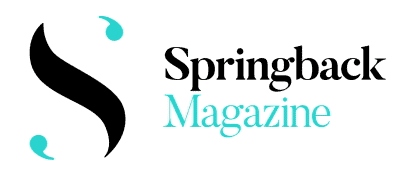Springback Academy 2015
Review

Manlike
Milena Ugren Koulas
Manlike is a gender-specific performance, talking about the culturally inherited qualities Balkan women should manifest in order to be taken for men. This odd story is the inspiration for a haunting dance-theatre piece, which for the most part is electrified by the accompaniment of a male voice. A woman impersonating stereotypical aspects of male/female identity, struggles between her instinctive nature and the brutalised, grotesque side of manly manners. The binary opposition of the two sexes presented on stage – man as primitive and animalistic, woman as stumbling traumatised figure – offers the audience a conformist perspective of gender issues. Women constantly victimised and their bodies turned into neutral ground for inscription, marked by male dominance. Such dichotomies merit a more productive approach that would surpass these serious limitations of feminine representation on stage.
A syncopated guttural male vocal percussion is heard in the darkness. Once an overhead light turns on, a man is standing still, facing the audience. From behind him, a female dancer drifts apart from him repeating a phrase which becomes the leitmotif: she covers up her breasts, her sex, and slaps herself out of desperation. Manlike, created by the choreographer and dancer Milena Ugren Koulas along with the musician and performer George Koulas, is inspired by women of the Western Balkans who were forced to become men to avoid being abused. While the opening and closure of the piece echo an agonising ancestral ritual, in which the dancer is exhausted by the male voice, the repeated leitmotif impedes further choreographic development and therefore insight into the negation and domination of the female body.
It all starts with a whisper. A man’s silhouette arises, vocalizing. A woman pops up at his side and a trancelike dialogue begins. A kind of ritual, of exorcism almost. Milena Ugren Koulas’ movement is jolting, echoing the jerky noises produced by her partner. Her body is constrained, twitching excessively, but also adopting defence postures, as a sign of resistance. Forces are clearly in contradiction here, in a battle between toughening up and crumbling down. The female body is at stake, that’s what the gestures suggest. At points the piece almost hypnotises – with the dramatic lighting and smokey-white mist that hovers over the stage – but it lacks a certain rawness. It ends with a sort of compromise, with some regret that the intention – how some women endorse manlike postures to survive – did not cut more to the chase.
On one level, Manlike is an encounter between sound and motion. George Koulas vocalises a stream of stutters, cries and whispers while dancer Milena Ugren Koulas twitches and jerks in exact echoes of the musical dynamic. On another level, it is an encounter between a male voice and a female body. George’s only actions – fingers drumming, arms marking time – are extensions of his own voice, to which Milena, all body, seems brutally chained. She flinches and flails, covering her breasts and crotch as if in fear and shame. Even when George is absent, his offstage voice still dominates, and even when they tentatively link arms, the relationship feels abusive: she is yanked to his rhythm.
Manlike was inspired by stories of women who dressed as men to survive, but what comes across is a simpler story – an enactment, even – of female subjection and sexual humiliation. It makes for disturbing viewing.

